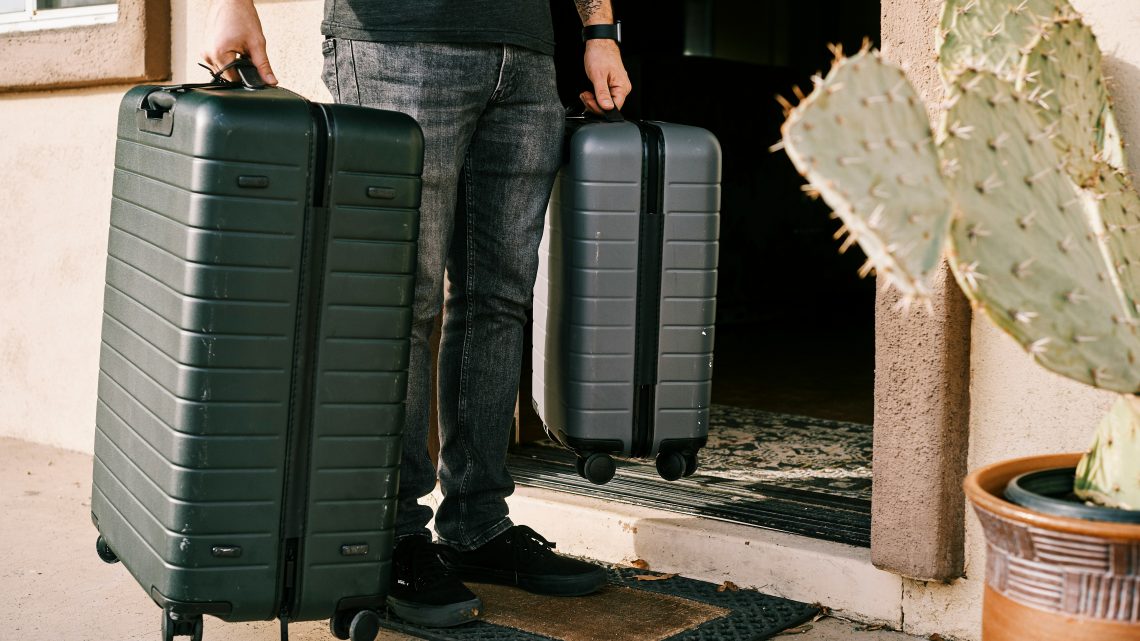Choosing Between One Large Suitcase or Two Medium-Sized Ones: A Comprehensive Guide
When preparing for a long trip, travelers often face the dilemma of whether to opt for one large suitcase or two medium-sized ones. The choice can significantly impact the ease of travel, fees for checked baggage, and overall convenience. One big suitcase may seem more straightforward—everything in one place—but with weight restrictions on most airlines, it might become a costly choice if it tips the scales. On the other hand, distributing belongings between two medium-sized bags can provide better organization, reduce strain from carrying or rolling a heavy bag, and offer a backup in case one bag is lost or delayed.
The debate between using one large or two medium suitcases is more than a mere matter of preference; it includes factors such as trip duration, destination, type of travel, and personal packing style. Each option has its advantages and limitations. As travelers increasingly look to purchase a medium-sized suitcase online, the balance between mobility and cargo space becomes an important aspect of travel planning. Assessing the nature of the trip and individual needs can lead to a more informed decision that enhances the overall travel experience.
Key Takeaways
- Packing for a long trip requires considering luggage size for practicality and airline regulations.
- Travelers should evaluate the quantity of items to pack and their weight when choosing luggage size.
- Opting for one piece of larger luggage or two smaller ones each comes with distinct advantages and drawbacks.
Choosing the Right Luggage for Long Trips
Selecting the appropriate luggage for extended journeys is critical, whether it’s a hard shell piece or the soft side. Travelers must weigh the benefits of a singular large suitcase against opting for two medium-sized ones, considering factors such as maneuverability, travel style, and airline size restrictions.
Pros and Cons of a Large Suitcase
Pros:
- Capacity: A large suitcase can typically carry everything needed for lengthy trips without the need for additional bags.
- Convenience: With one piece of luggage, there’s only one bag to check and keep track of during travel.
Cons:
- Size Restrictions: May exceed airline size limits, potentially leading to additional fees or the need to check the bag at airports like LAX or on airlines such as Delta.
- Maneuverability: A large, fully packed suitcase might be cumbersome, especially in crowded spaces or navigating areas like New Zealand’s varied terrains.
Benefits of Two Medium-Sized Suitcases
Benefits:
- Flexibility: Two suitcases offer the option to adapt—one can be used as a checked bag, while the other meets carry-on requirements.
- Weight Distribution: Easier handling and carrying through airports since weight is divided between two pieces.
Consideration:
- Management: Keeping track of multiple cases can increase the risk of loss or theft during transit.
Factors to Consider
- Material: Choices range from durable polycarbonate for hard shell luggage, known for being scratch-resistant, to flexible ballistic nylon for softside luggage.
- Wheels: Spinner wheels provide easy 360-degree maneuverability, essential for navigating busy airports.
- Dimensions: Besides the large suitcase size, ensure medium suitcase size also complies with airline size restrictions.
- Features: A TSA-approved lock or a built-in compression system can enhance security and packing efficiency.
- Durability and Design: Luggage should withstand the rigors of travel; a warranty can be a testament to the brand’s confidence in their product’s resilience.
Preparation and Travel Tips
When planning a long trip, understanding the best approach to packing and navigating travel logistics can make a significant difference. These strategies impact how you pack, the ease of your journey, and the condition of your belongings upon arrival.
Packing Strategies for Efficiency
For efficient packing, consider utilizing a compression system to maximize the capacity of your luggage. A Travelpro Platinum Elite suitcase exemplifies this, featuring a built-in system that optimises space. When buying a suitcase, opt for one that balances volume with maneuverability; a hard or soft luggage piece in a medium size can be a versatile choice. Hardshell cases, such as those made from polycarbonate, offer scratch-resistant surfaces and durability, while soft side luggage crafted from ballistic nylon is flexible with a potential for expansion.
Navigating Airports and Airlines
While at the airport, knowing your airline’s luggage policies is critical. Airlines like Delta have explicit size restrictions; for instance, checked luggage should generally stay within 62 inches when combining length, width, and height, and adhere to the weight limit. Familiarize yourself with TSA-approved locks to secure your belongings and ensure access for inspections. If you have a layover at airports such as LAX, be aware that a small suitcase or cabin bag with spinner wheels can be easy to maneuver during transit.
Maintaining Your Luggage
The longevity of your luggage relies heavily on its design and durability. Brands like Away offer a comprehensive warranty, ensuring your investment is protected. Post-travel, keep your luggage collection clean and inspect for any damage. Utilise backpacks or a durable suitcase for outings or areas where rolling luggage may not be practical. Whether exploring New Zealand or preparing for the holidays, maintaining the condition of your bags will prepare them for your next adventure.
Conclusion
Choosing between one big suitcase or two medium-sized ones for long trips depends on individual preferences and needs. Travelers should weigh the convenience of manoeuvring a single piece against the flexibility provided by two bags. It’s important to consider airline baggage policies and personal packing style. Ultimately, the best choice maximises both comfort and practicality for the traveler’s specific situation.










